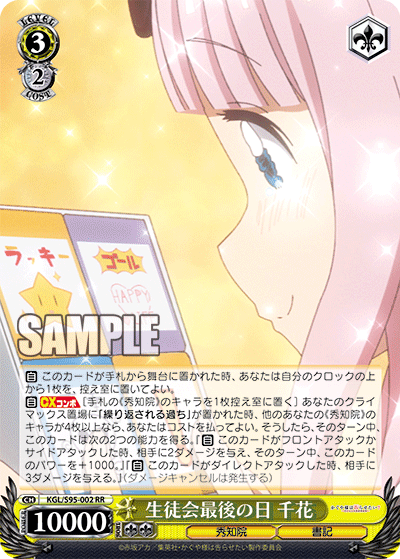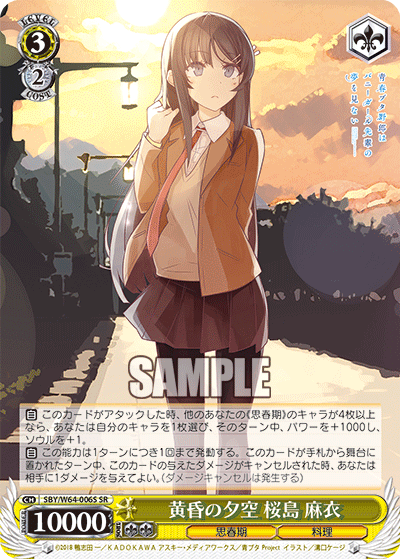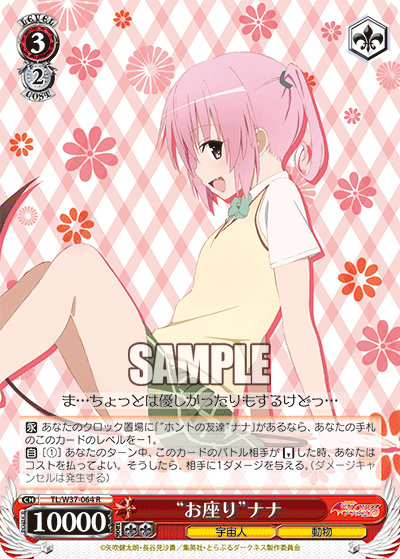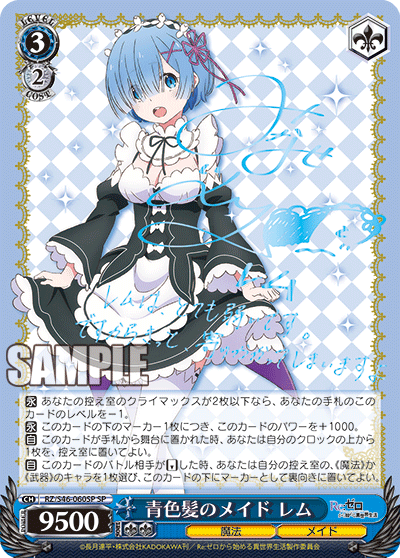I get it. Sometimes your main finisher just doesn’t get the job done. You need that extra bit of chip damage, maybe one more instance to really make your opponent keel over. Even with the powerful finishing effects of this day and age, it never hurts to have a secondary backup plan. A lot can happen in a game. No two games are ever exactly the same.



HOL/W91-076RR 未来へ一緒に 宝鐘マリン (center)
ZLS/W93-047RR 源 さくら (right)
Most modern finishers have an ability to deal extra instances of damage to your opponent, hopefully securing some damage into their clock. While some can deal more damage instances than others with different beneficial effects, the main goal of these finishers is, as implied by their name, finish their opponents.
One grand upside and valued point for finishers is when they can perform double duty as a healer as well. Due to healing being such a important effect to preserve life total in the late game, its extremely efficient to have healing tied to the finisher as well.



SBY/W64-006SR 黄昏の夕空 桜島 麻衣 (center)
TL/W37-064R “お座り”ナナ (right)
What is a secondary finisher then? Why need a secondary finisher at all? Well, the truth with the game is that sometimes you simply don’t meet the conditions for your main finisher. Whether you unfortunately had them hit into clock, hidden deep in your stock, or placed in a region out of reach for example, you simply don’t have them ready to be deployed. Furthermore, you may not have their condition ready whether that is grabbing their climax or meeting their finishing costs. That is where the secondary finisher steps in.
Comparatively to the primary finisher, secondary finishers are often not as powerful or consistent in their finishing ability. Some of their finishing abilities are based on gimmicks. Secondly, they may not deal larger amounts of damage needed to close out the game. However, in a pinch, these secondary finishers may be the just the card you need to secure victory. Most importantly, secondary finishers aren’t usually tied to a climax combo.
Now this is to say we’re looking at secondary finishers in a vacuum. Some primary finishing combos may often even employ secondary finishers as part of their combo.



KMD/W96-072C 人間との対話 イルル (center)
NK/W30-051RRR 深まる友情 千棘 (right)
The last class of level 3s for this article are the healers. Healers come in many forms. They simply remove cards from your clock and place them in another zone. A very common healer type is the heal to stock where a card is discarded and then the card “healed” from clock is placed into stock. Although this is considered a very beneficial effect due to the difficulty of gaining stock in the game, not every deck wants this type of effect. If your end-game is heavy on hand costs, this healer type may not be the most beneficial to your deck. As such, like every deck, tailor the cards to suit you and your deck’s needs.
Healers are great because the best way to not lose is to not be close to death. The less cards in your clock, the better. Finishing healers are nice, but most of them have a hard condition to only come out at level 3. Other healers may potentially come out on stage as early as level 2. Furthermore, extra healing is always nice. Having a few copies can save you a bit of stress and give you extra safety from lethal at 3/7.
How many of each profile should you run? Well that is entirely dependent on your deck. A few tips should be to prioritize your main finisher the most. This is the key card that your deck works toward usually. The other two, secondary finishers and healers, are additional cards that are more flexible in terms of slots. Mix and match and see what works best for you.